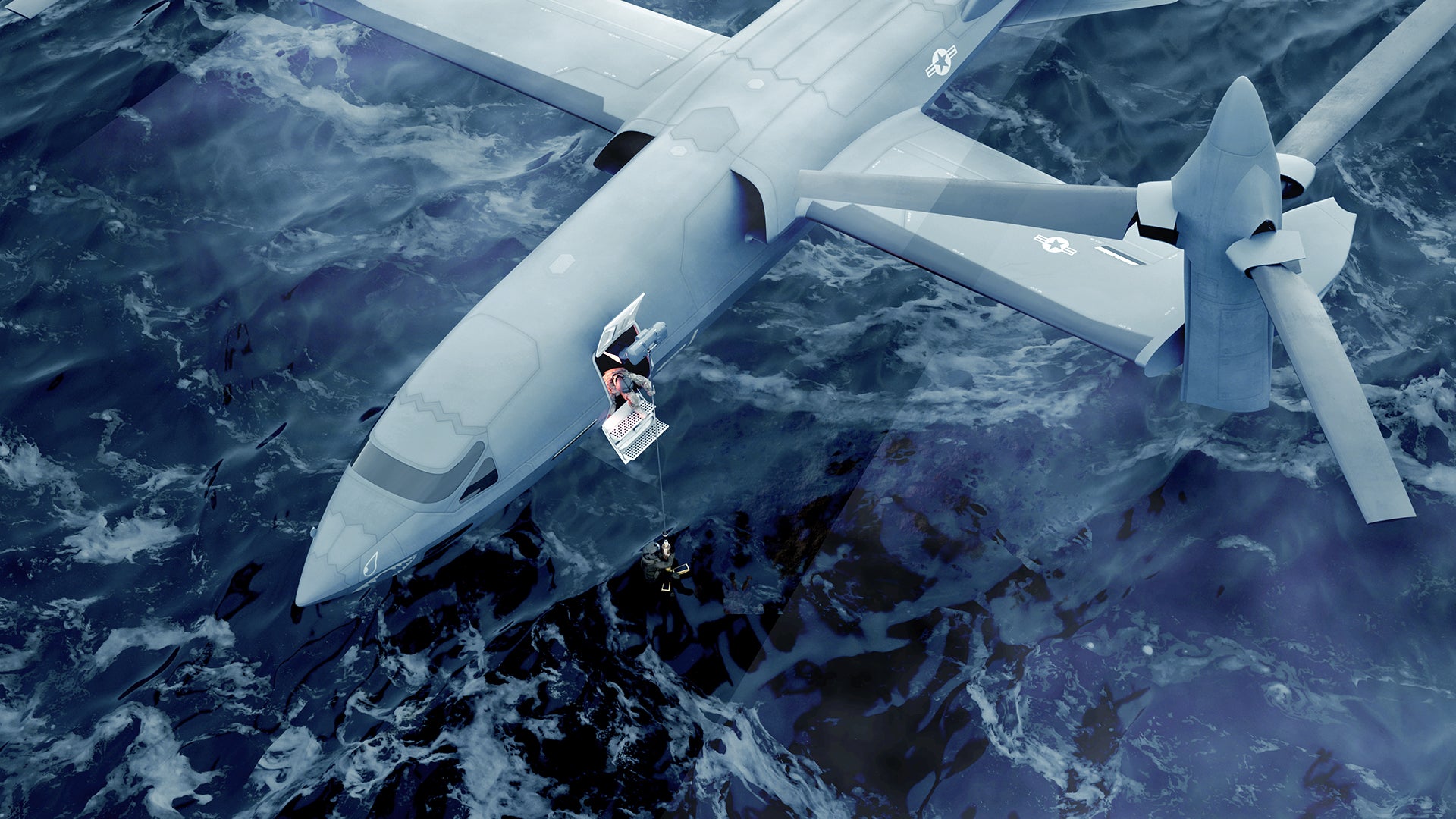Bell has provided The War Zone with exclusive details about its recently revealed concepts for future High-Speed Vertical Take-Off and Landing, or HSVTOL, aircraft, which we looked at initially in this previous article. While being able to takeoff and land vertically using rotors and fly at jet speeds in forward flight sounds far-fetched, it turns out that there is decades of elaborate risk reduction work and general research already done on this exact concept. As such, actually realizing such a capability set may be far less of a technological revolution than one would think at first glance.
The War Zone sat down, virtually at least, with Jeff Nissen, Senior Manager Advanced Technology at Bell Flight, to talk about how the company has got to this point in its HSVTOL endeavors, as well as looking at some of the details of its latest concepts and how they could find a place in the U.S. military’s inventory.
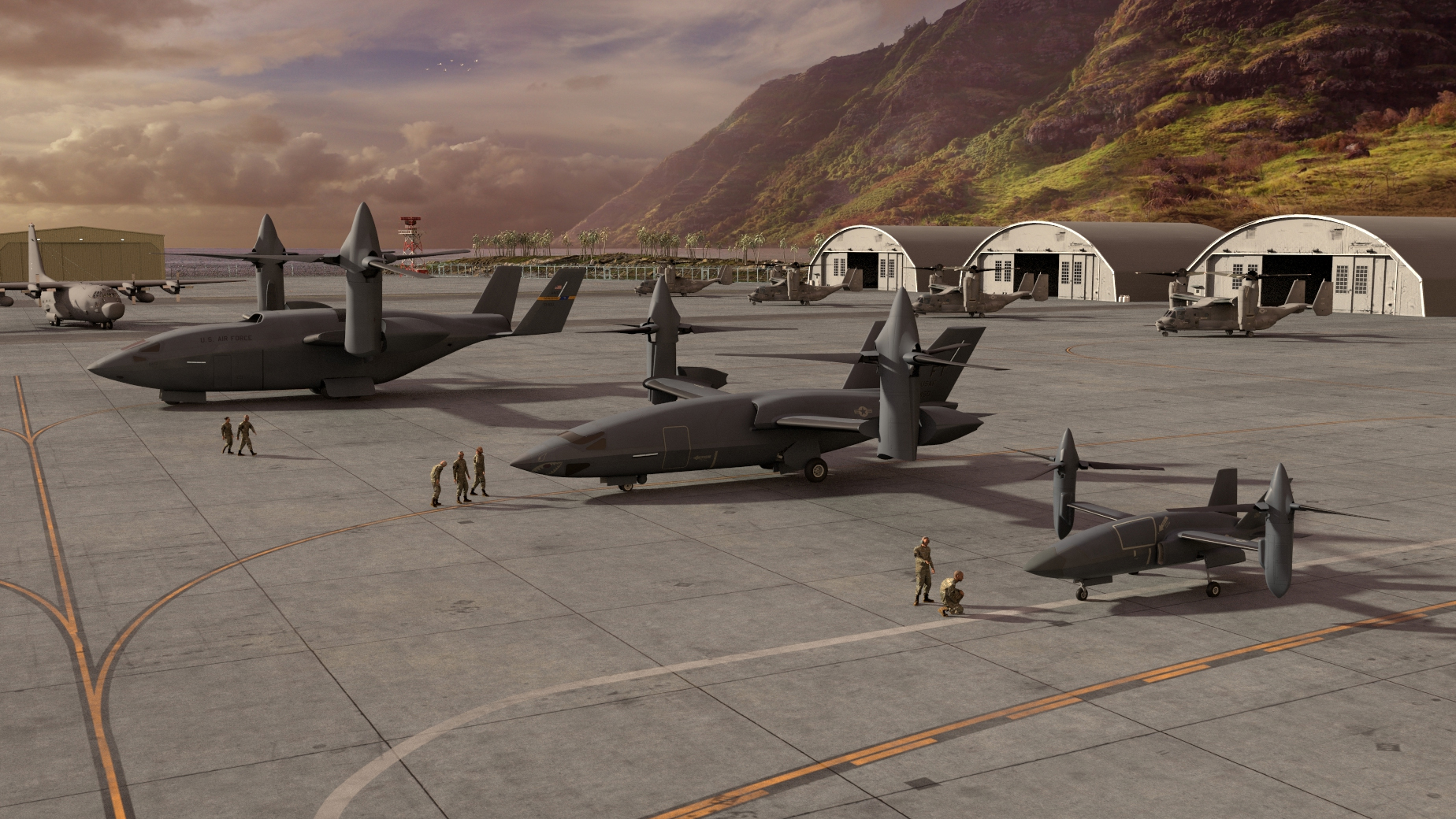
At this point, it’s worth noting that the ‘high speed’ definition, as described by Bell, is anything over 400 knots. This is considered the barrier to entry for HSVTOL, and the company is of the opinion that any requirement that involves a speed lower than this would be better met by a conventional tiltrotor. Generally speaking, HSVTOL, especially Bell’s vision of it, uses rotors for the vertical terminal phases of flight and a jet engine with traditional exhaust for high-speed flight.
A mature HSVTOL design would be optimized for high cruise efficiency, although, as Nissen notes, anything over Mach 0.85 is likely to present major drag problems. While it’s theoretically possible to continue to add thrust to the design, that would impose a corresponding reduction in fuel efficiency, so a balance has to be struck. “You’re going to want range and speed, so would not want afterburners on this aircraft,” Nissen explains.
The long journey toward HSVTOL
When examining the stealthy-looking HSVTOL concepts that Bell unveiled last month, it’s also important to remember that the quest for these kinds of aircraft — combining the speed and survivability of a fixed-wing jet aircraft with the ability to land and take off like a helicopter — dates back to the late 1960s.
At that time, the Vietnam War exposed a very real requirement for a more survivable platform that would be able to take over the U.S. Air Force’s combat search and rescue mission set, as well as other personnel recovery activities, from traditional helicopters. An HSVTOL design would be expected to fly into a potentially contested area at high speed, landing in a confined space or hovering over the jungle to pluck a downed airman from out of harm’s way. Other missions at the time called for a similar type of capability, including retrieving Apollo command modules on behalf of NASA, another job that fell to conventional rotorcraft.
Other services, too, took an interest in HSVTOL around about the same time. This included the U.S. Army, which no doubt eyed the unique special operations possibilities provided by an aircraft of this type and the ability to rapidly insert or extract small teams of soldiers, potentially from behind enemy lines, over great distances.
As it turned out, a whole host of manufacturers, including Bell, came up with HSVTOL concepts between the 1960s and the 1990s, picking their favorite configurations that combined vertical lift with high-speed forward flight. From these very early concepts onward, a key design challenge has been the transition between vertical and cruise flight. Or, more concretely, what to do with the rotor blades when they are not being used?
Even early on, designers of HSVTOL concepts typically conceived of designs in which helicopter-style rotor blades either folded back to reduce their aerodynamic profile, trailing behind the aircraft, or were otherwise stowed away conformally within the fuselage or engine nacelles. A folding blade arrangement is seen on Bell’s latest HSVTOL concepts, too.

By the 1970s, U.S. aviation companies had begun to actually develop hardware to prove some of these concepts. Bell, for its part, eventually came up with a full-size, ground-based demonstrator, with a 26-foot diameter rotor arrangement, the blades of which retracted neatly away to lie flush around the nacelle. This testbed explored how the rotors behaved in the tricky transition between vertical and high-speed horizontal flight, including how the rotor would be stopped, and how it would avoid buffeting or vibration while it was being tucked away, at the same time that the aircraft itself was accelerating to cruising speed.
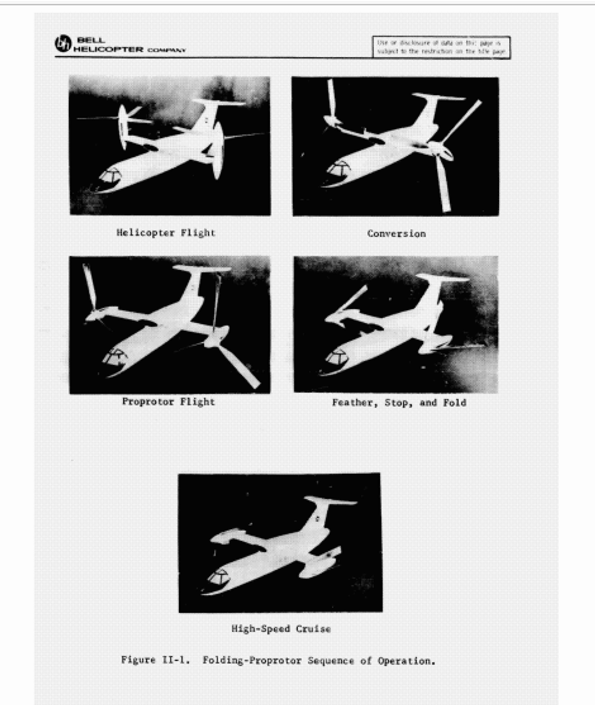
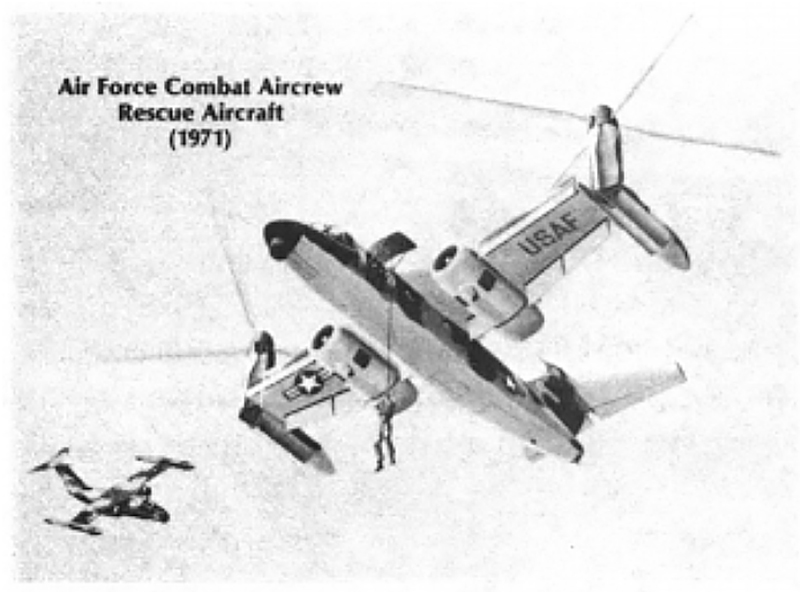
Ultimately, Bell proved that the rotor-fold problem could be solved aero-mechanically (using airflow alone), and that it was possible to wind up or wind down a rotor without causing dynamic instability in the system. In a 1972 test in a wind tunnel at the NASA Ames Research Center in California, the company demonstrated between 30 and 40 fold-and-unfold cycles at airspeeds ranging from 150 to 175 knots.
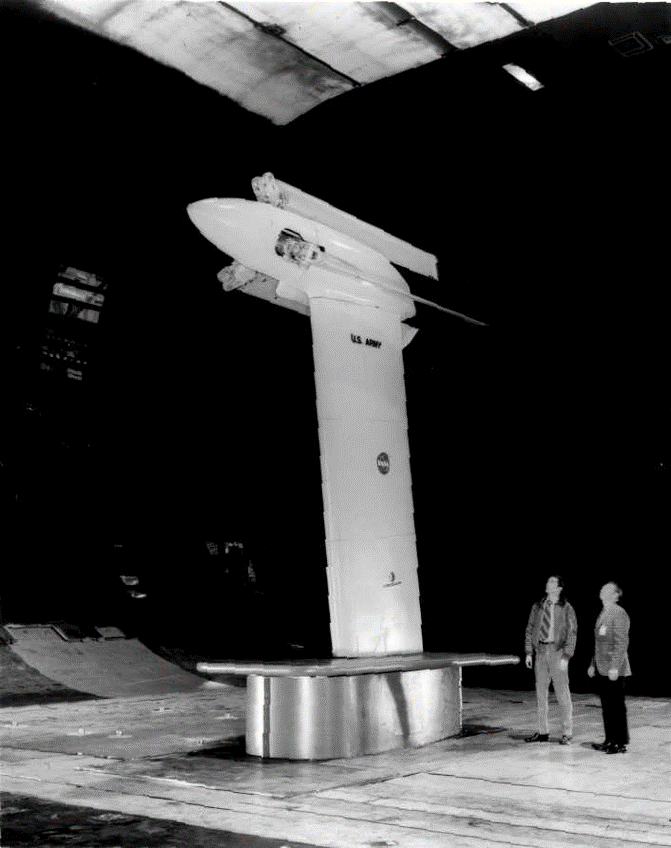

At around the same time, the Air Force was again looking at the possibilities for a future Combat Aircrew Rescue Aircraft (CARA), further prompting Bell and others’ efforts in the HSVTOL realm. Even at this early stage, the Air Force rescue specialists were eyeing a design that would be smaller than the existing HH-53 Super Jolly Green Giant, have a minimum cruise speed of 400 knots, have hostile ground fire detection capability, an electronic countermeasure suite, and be equipped with terrain following/terrain avoidance radar. In the event, the service stuck to more conventional rotorcraft solutions for this kind of mission, while the end of the conflict in Southeast Asia meant personnel recovery lost some of its priority.
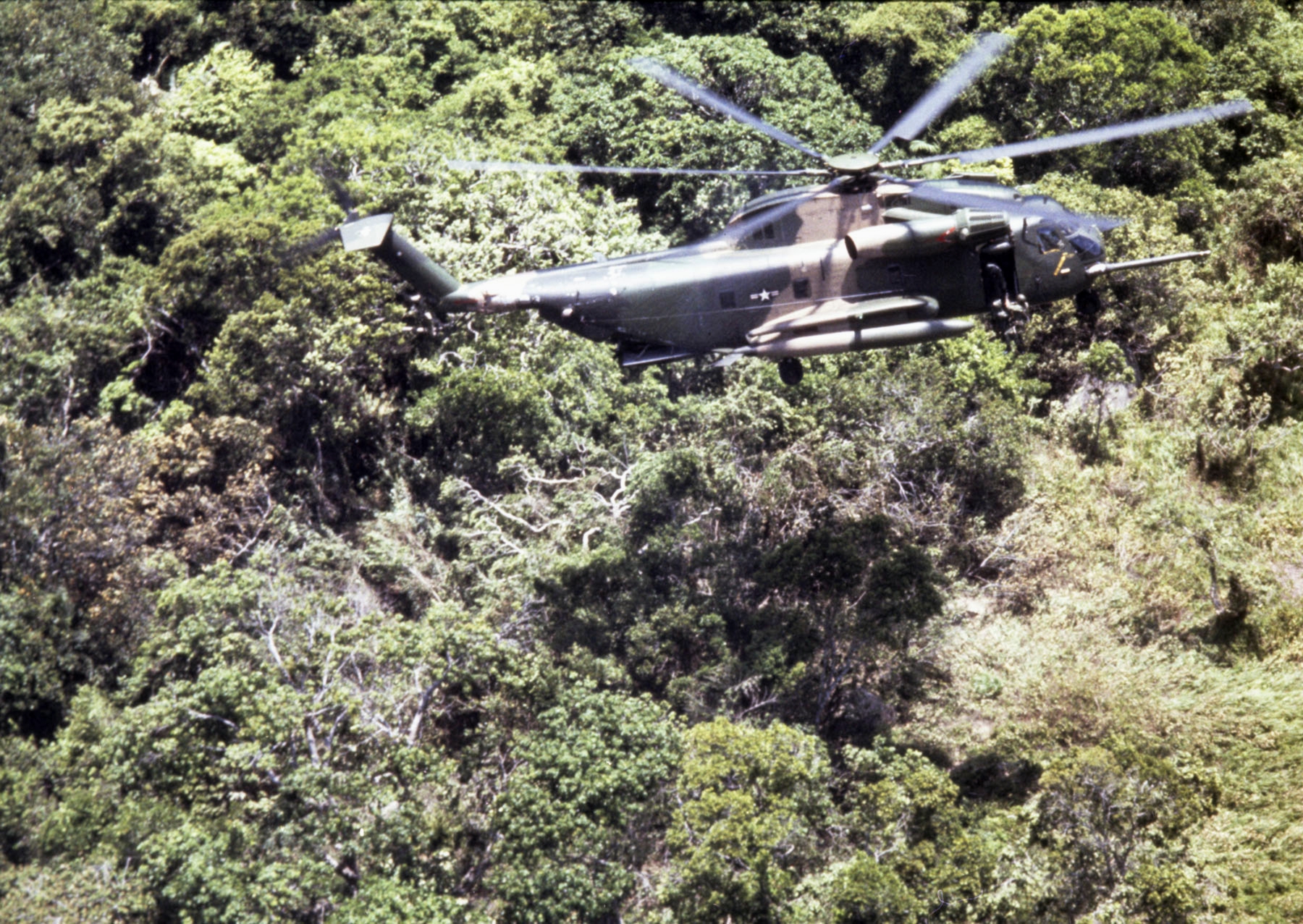
Nevertheless, technological boundaries continued to be pushed, now focusing on how to best power an aircraft that required two distinct propulsion forms: a jet engine for high-speed flight and shaft-driven rotors for vertical flight. One answer seemed to be a convertible engine, a type of powerplant that can switch between turboshaft and turbofan modes, eliminating the need for separate lift and cruise engines.
New propulsion, more challenges
In 1984, General Electric ran one of its TF34 turbofans — as used in the A-10 Thunderbolt II ground-attack jet and S-3 Viking anti-submarine warfare aircraft — in a convertible configuration, producing a full-scale prototype that provided shaft horsepower from the front, and turbofan thrust coming out of the rear. It was a bold effort, but the stark reality was that convertible jet engines were very hard to master. Indeed, Bell today anticipates that the first of its new HSVTOL designs will fly with separate lift and cruise engines, pending the arrival of truly mature convertible engines for more ambitious concepts.
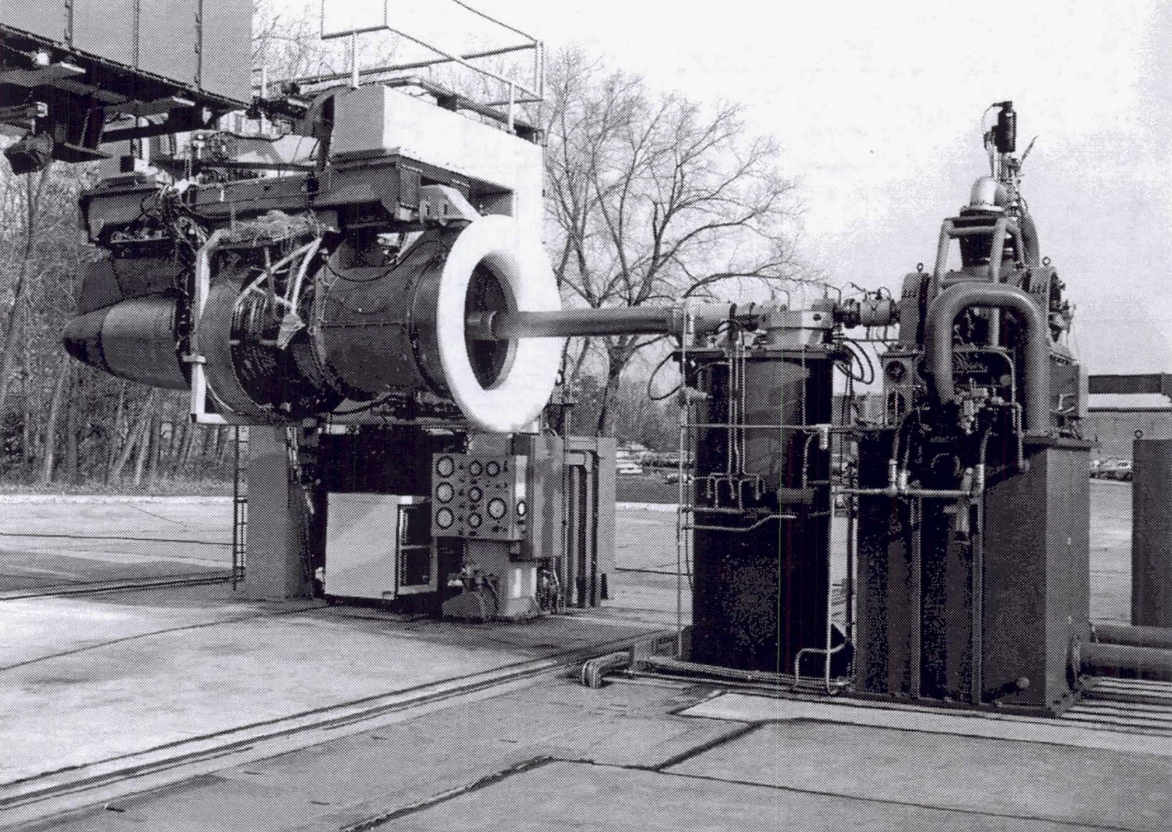
It’s also worth noting that following the tragic failure of Operation Eagle Claw at the Desert One austere landing zone in Iran, the U.S. military, and the special operations community, in particular, put a whole new emphasis on higher-speed VTOL aircraft. This included capabilities like what the V-22 Osprey could offer and more ambitious, higher-speed designs, as well.
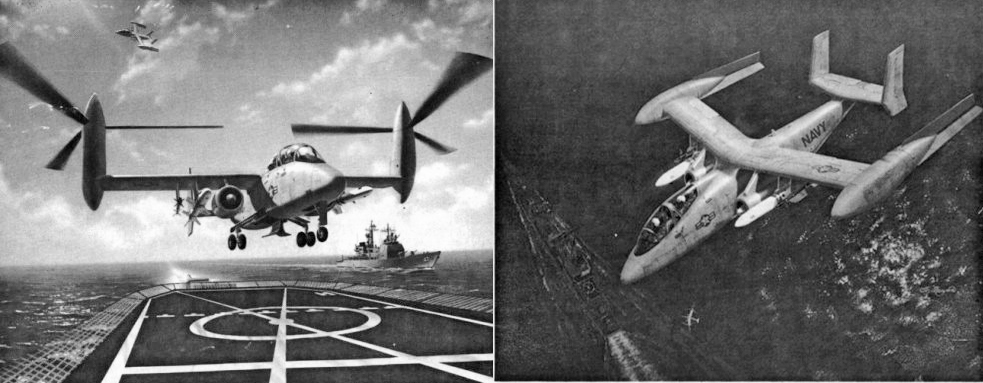
By the 1990s, the Osprey had entered flight testing as the first practical military tiltrotor aircraft, but U.S. plane-makers were still not able to field a functional HSVTOL design capable of true jet speeds. Nevertheless, studies and development initiatives continued in the decade that followed, with NASA and the Defense Advanced Research Projects Agency (DARPA) now taking a lead.
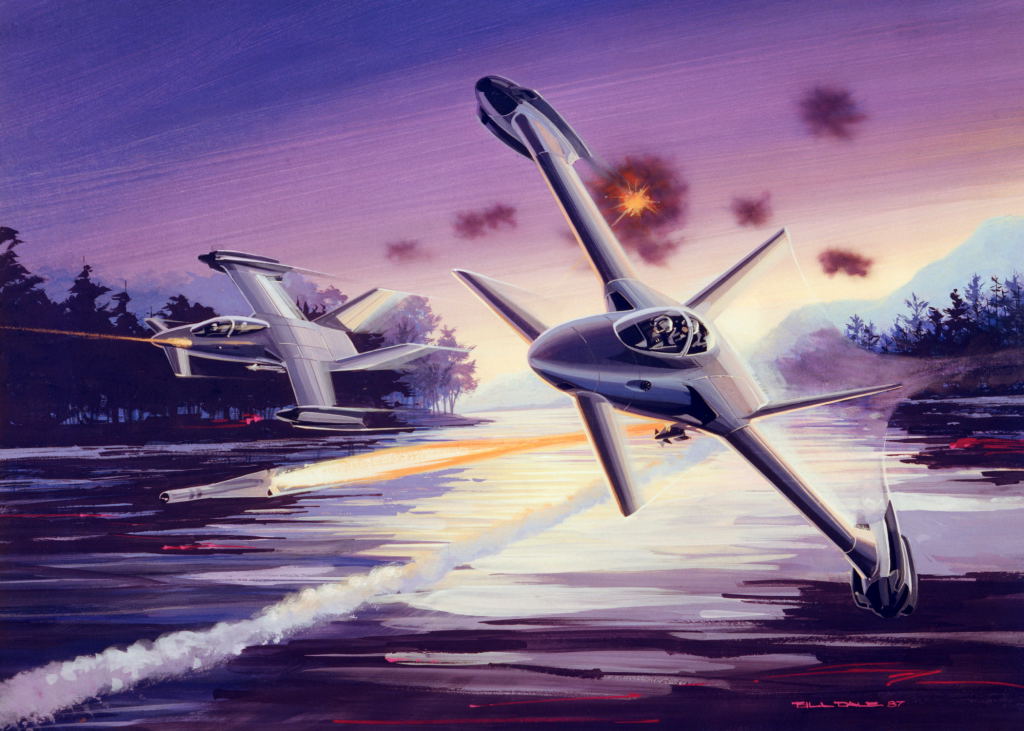
Then, in 2008-09 there was NASA’s VTOL X-Plane competition, won by the Aurora XV-24 LightningStrike. Hybrid-powered ducted electric fans were used for propulsion with this concept. Although it ended up getting canceled, it once again demonstrated the enduring interest in HSVTOL.

All this historical effort, or what Bell’s Nissen describes as a “trail of tears,” resulted in nothing tangible entering service, or even getting close to it, despite the great promise that had been demonstrated, in some cases using real hardware. So what went wrong? Nissen points to three particular aspects that, so far, have prevented a full-size HSVTOL design from being realized.
First, the vertical-lift system is, by its nature, highly complex. Many of the earlier concepts were being put together before any kind of tiltrotor aircraft was even close to being in operational service. Simply put, it was not realistic for HSVTOL to leapfrog conventional tiltrotor designs, which already had enough quirks and nuances of their own. After all, when the first generation of HSVTOL studies was being drafted, the experimental XV-15 tiltrotor aircraft had not even begun to fly test sorties, with those flights starting in 1977. The U.S. Marine Corps’ MV-22B Osprey would not reach initial operational capability until three decades later.
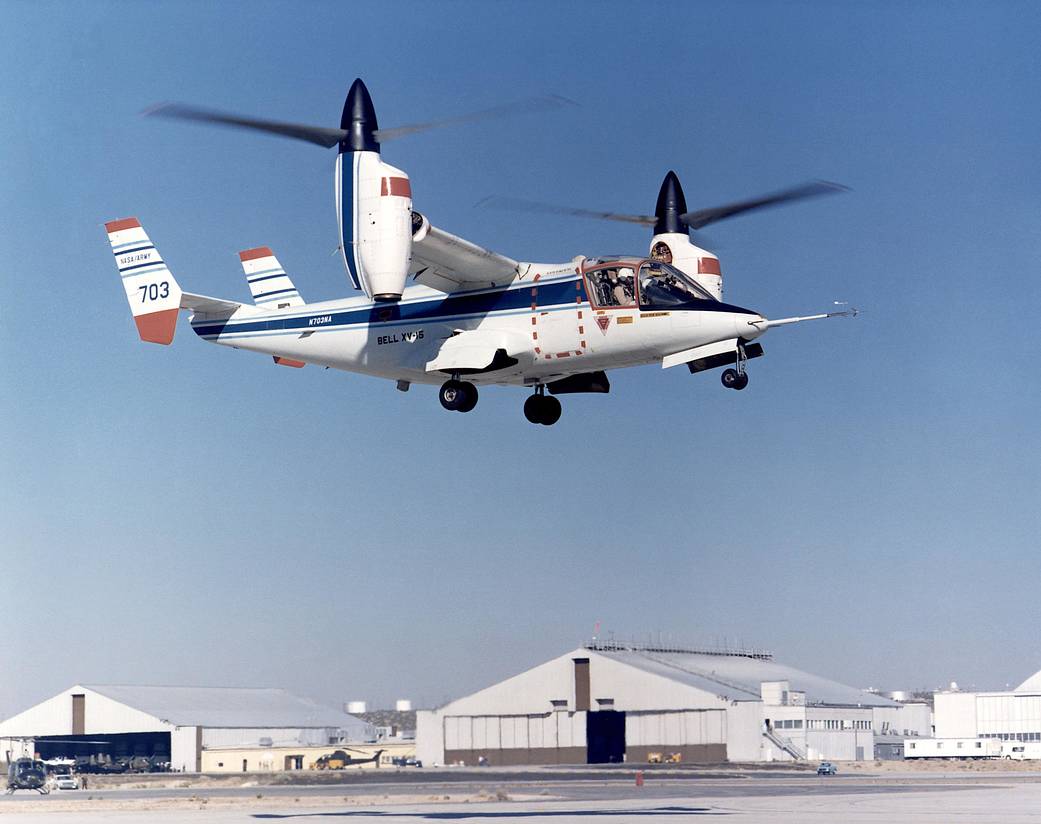
The second factor was that the digital engine control technology required for HSVTOL to be feasible, and safe, was simply not widely available until the 1980s, at the earliest.
Finally, the transition between cruise and lift modes demanded fly-by-wire controls, another technology that was in its infancy when the first HSVTOL concepts were being schemed. For this reason, tiltrotor aircraft were not a truly practical proposition for large-scale service in the 1970s or 1980s, much less the more demanding HSVTOL designs.
Bell’s latest concepts
Now, however, the dream of HSVTOL aircraft is within reach, at least according to Bell.
That is even without a mature convertible engine but, as Nissen points out, that shouldn’t prevent the company from bringing at least a first iteration of its new HSVTOL concepts to the flight demonstration stage.
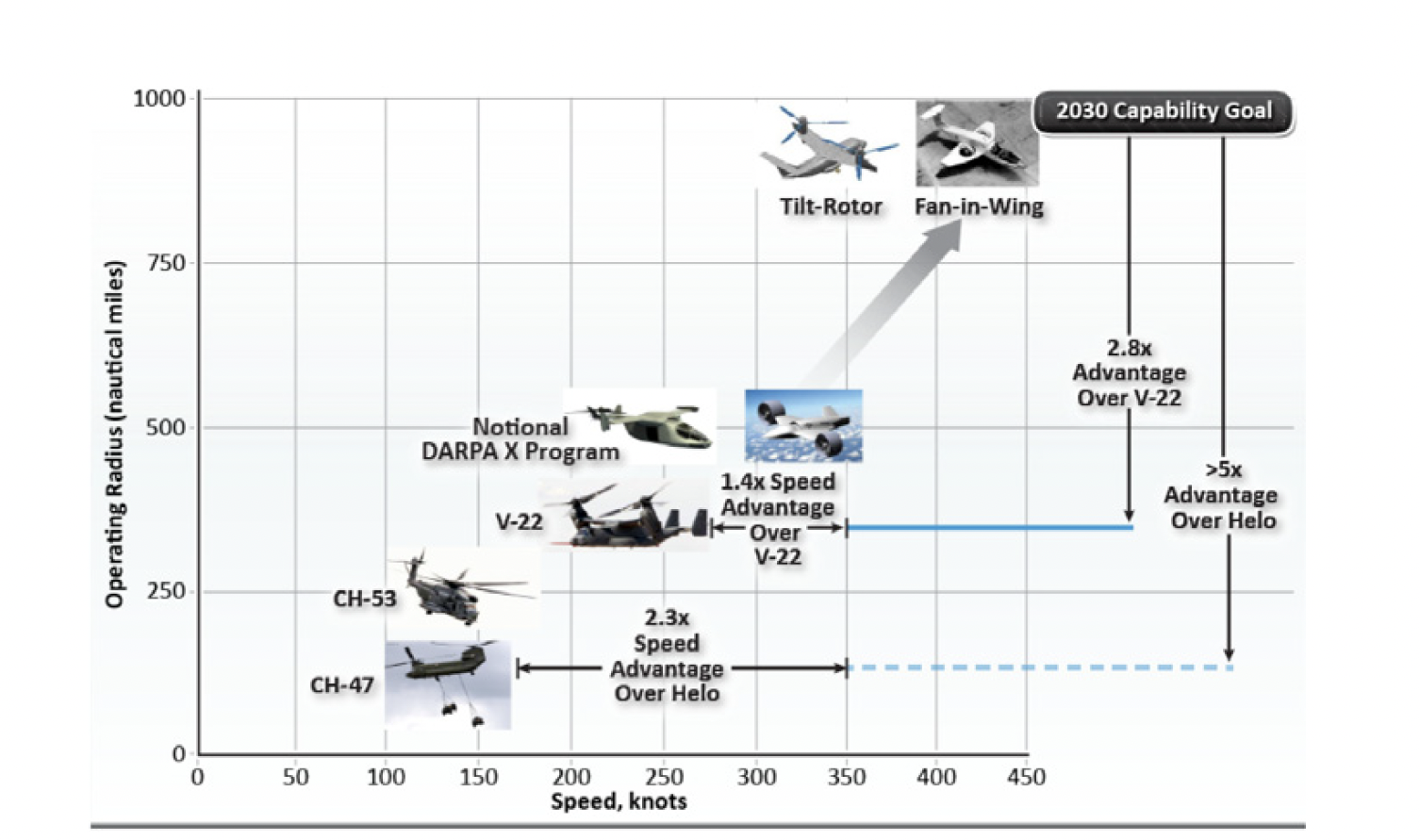
As suggested by the company’s initial computer-generated artwork, Bell’s latest three HSVTOL concepts are all different sizes, scaling from the smallest, known as HSVTOL Light, all the way up to a transport that appears to be close to the size of a C-130 airlifter.

While Bell’s larger two concepts are manned, the HSVTOL Light concept is unmanned and is being pitched as the most easily realizable ‘entry-level’ HSVTOL design. HSVTOL Light has two separate, commercially available engines—turboshaft to drive the props and a jet to propel the aircraft in forward flight—unlike its two larger cousins, which feature convertible powerplants. This configuration was chosen for the smaller vehicle, Nissen says, because it offers a faster path to flight test and possible service, with no requirement for an engine development period.
“We can achieve a pretty damn good aircraft with a configuration that’s got a split propulsion,” Nissen adds. In fact, “we can build that right now,” he says. “If somebody wants to see this fly as fast as possible, and doesn’t want to wait for a convertible engine, there’s a great opportunity to go with that aircraft.”
SLURRP: HSVTOL goes sea-based
HSVTOL Light is being proposed as part of what Bell calls the Sea-based Logistics Unmanned Refuel/Re-arm Platform, or SLURRP. This is tailored for the Air Force’s emerging concept of expeditionary operations, especially in the Pacific theater. It involves operating the autonomous HSVTOL Light from an unmanned floating platform that is capable of refueling the aircraft.
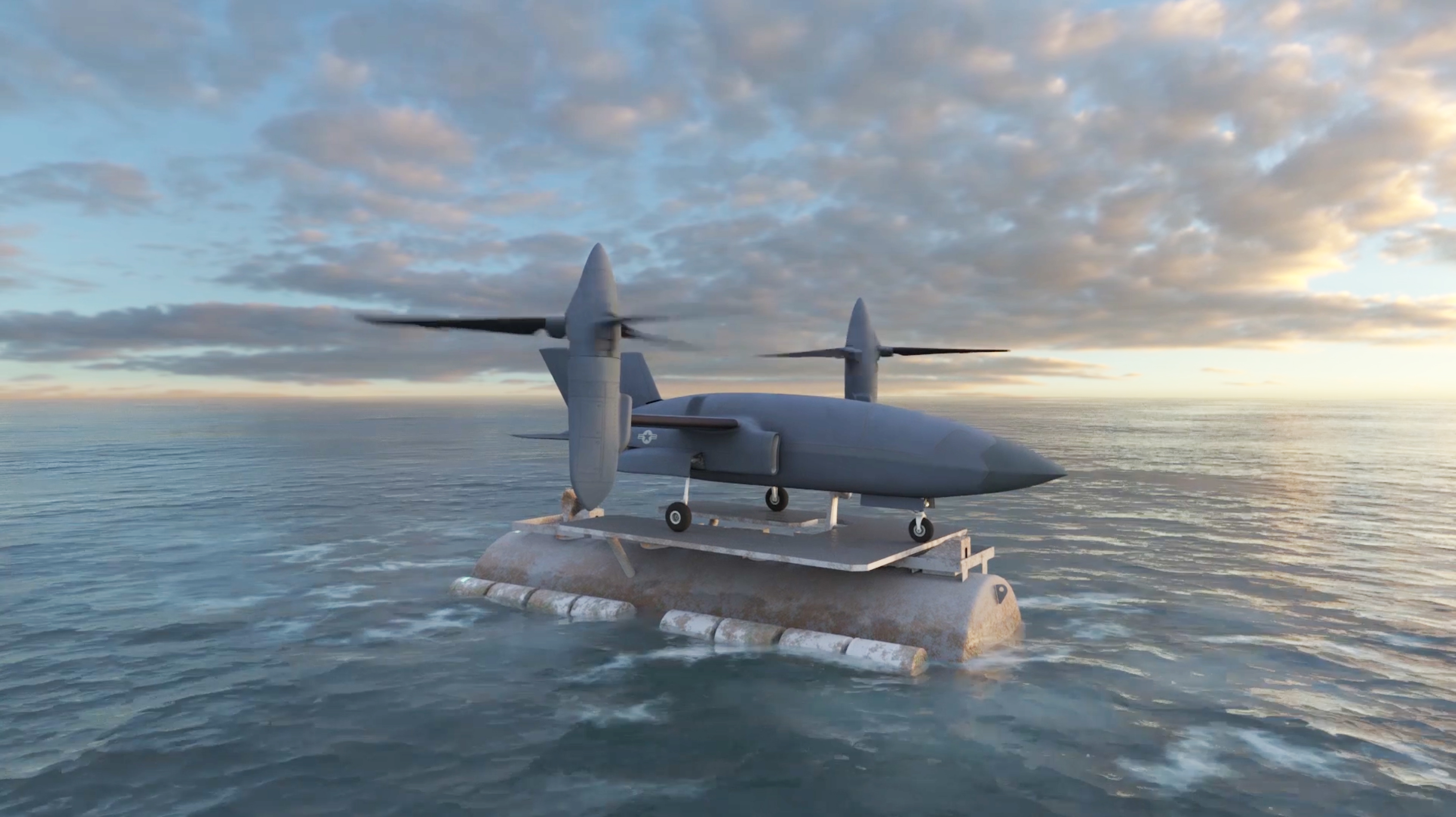
As well as the Air Force’s high interest in this theater, the concept clearly also has relevance to the U.S. Marine Corps’ emerging plans for Expeditionary Advanced Base Operations (EABO), which similarly seek to exploit the potential of distributed and expeditionary operations, especially in this region.

“What [SLURRP] does is that shrinks the Pacific ranges dramatically so we don’t have to have a Navy vessel for a refueling platform and we also don’t need a stealth tanker because we can literally have these things dotting the ocean surface or being submerged and pop up when they’re needed,” Nissen explains.
Nissen says that when it comes to HSVTOL, the company’s mantra is “speed, range, and survivability,” attributes that clearly play into the Air Force’s vision of future warfare in the Pacific environment, especially when it includes moving away from traditional runways.
It’s easy to imagine HSVTOL Light flying intelligence, surveillance, and reconnaissance (ISR), or even strike missions as part of this distributed concept of operations, breaking entirely free from reliance on runways, traditional landing sites, or even warship decks to offer an exceptional level of survivability. Doing so would also drastically complicate an adversary’s own defensive plans.

The video posted above also shows the neat method used for HSVTOL Light’s transition from vertical to horizontal flight, with the rotor blades folding back into the nacelles using airflow alone, with no requirement for complex mechanical braking and powered folding mechanisms. Nissen says that the company has been working hard to make this transition as seamless as possible and has been looking at lightweight concepts that employ either no clutch at all, or a very light clutch, and require no braking system.
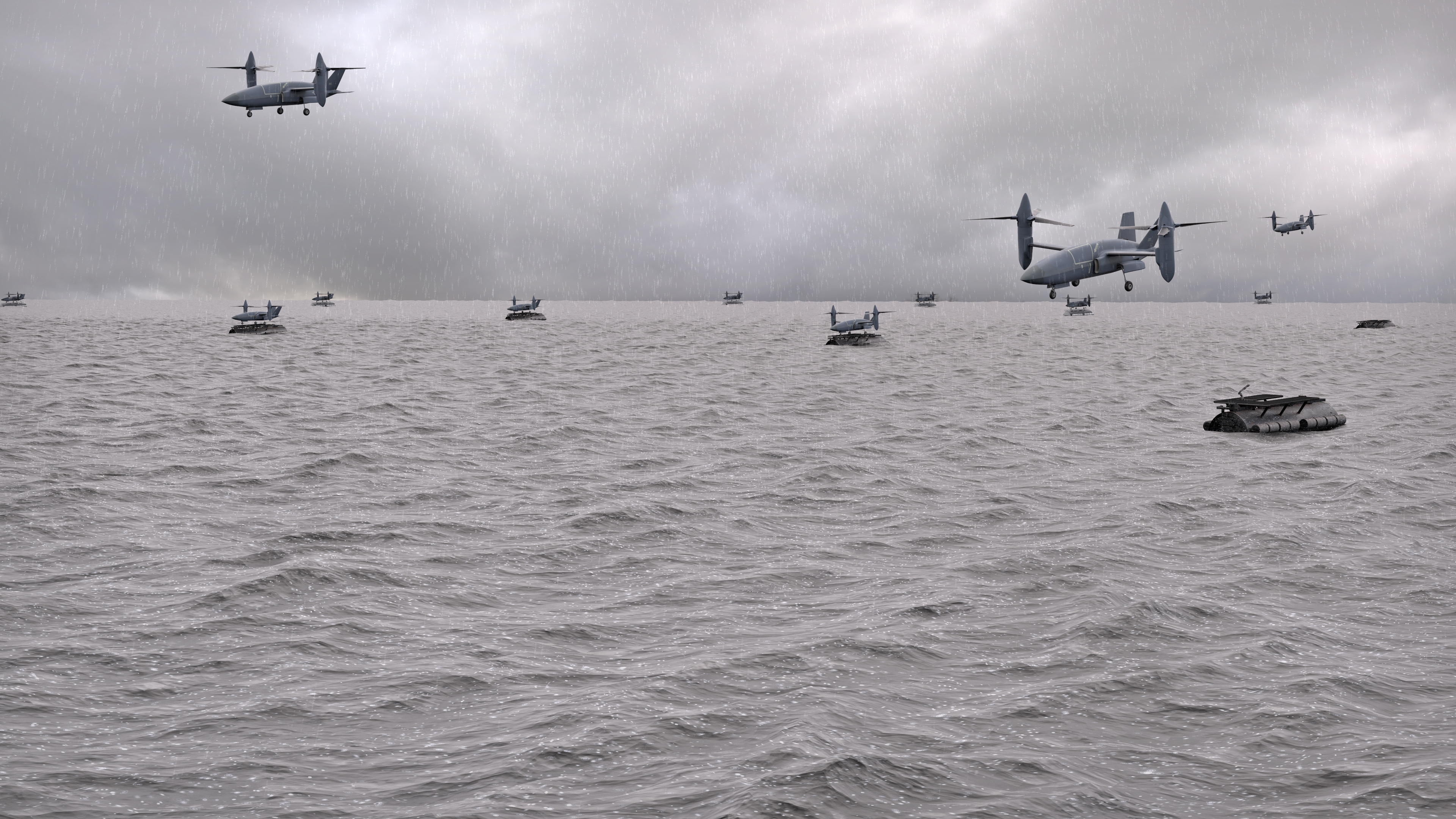
Once flying in ‘jet aircraft’ mode, with rotors stowed, the HSVTOL Light, and the other HSVTOL concepts, would offer greater maneuverability than a traditional tiltrotor, although the degree of agility would be based primarily on the particular customer’s needs. A conventional tiltrotor is stressed for maneuvers in the region of 2.5G. Nissen says that while the HSVTOL is “not going to be a 9G aircraft, we will fly these at low altitude, the way AFSOC [Air Force Special Operations Command] does business. We are a jet that’s capable of flying with an F-35 at 30,000 feet as well as flying at 100 feet at a similar speed. If there’s a big hill up front and we’re doing 400 knots, we’re going to need a high-G aircraft to maneuver. We would have terrain-following radar to help us, in that scenario,” he adds.
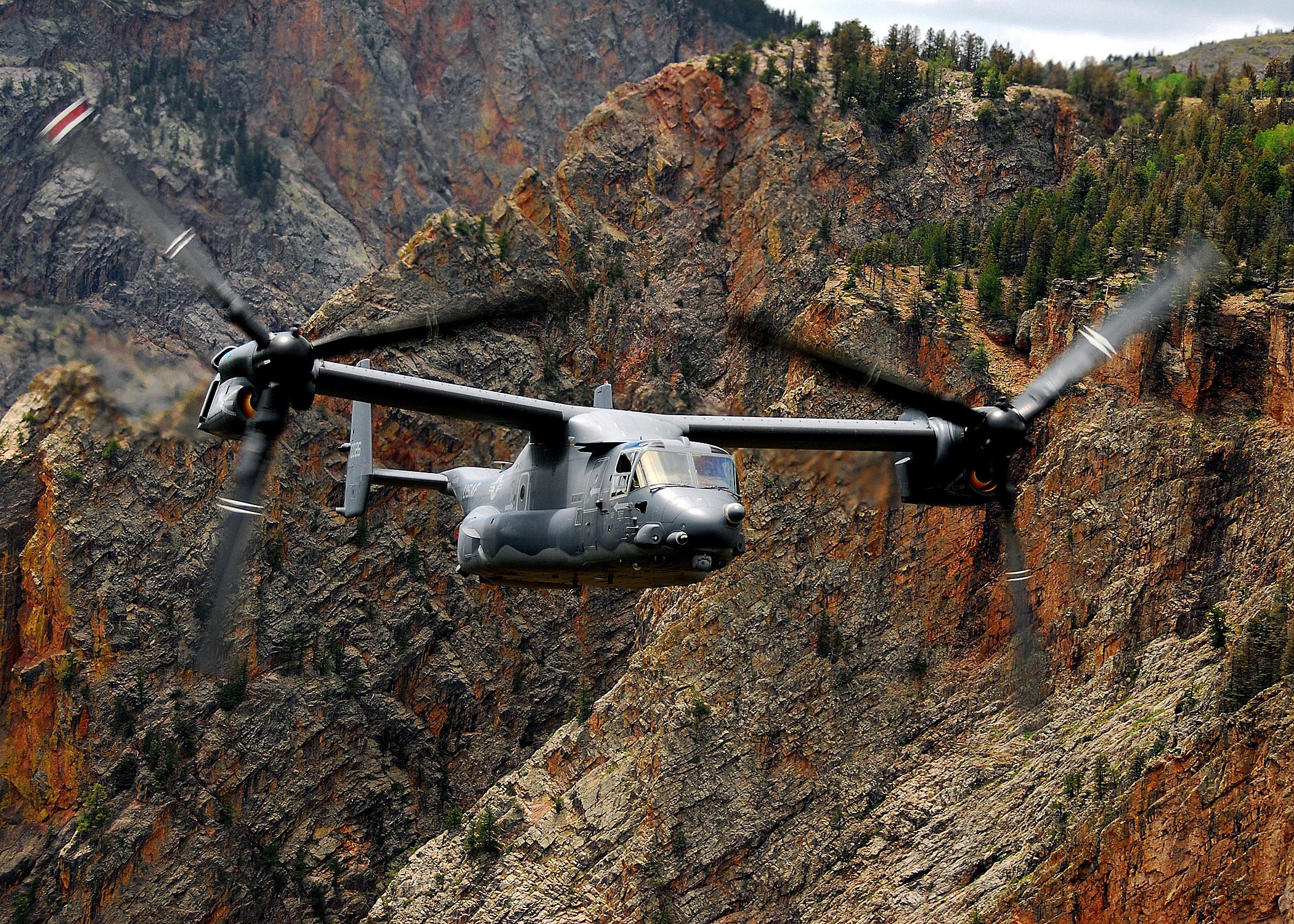
As for the other, larger variants, the company decided that once the light concept is developed, a convertible engine becomes increasingly beneficial. Ultimately, Nissen says, off-the-shelf turboshafts, required to drive the rotors, ‘scale out’ at around 7,000 horsepower, so any aircraft with a greater power requirement will need another solution. The type of convertible engine in mind is essentially similar, in concept, to the aforementioned GE TF34 testbed, in which a core would be taken from an existing, mature engine and then adapted to drive a shaft that could power the rotors when needed.
The Pratt & Whitney F135 turbofan that’s already coupled with a lift-fan in the F-35B short takeoff and vertical landing (STOVL) fighter jet is one possibility for adaptation. “The simplistic way would be to imagine that lift system, instead of facing down, faces aft and now you’ve got a capability that provides jet thrust and shaft horsepower,” Nissen explains. The challenge in this case, however, is that the weight and fuel efficiency of the F135 is not ideal for an HSVTOL design. To get the required efficiency, a high-bypass solution would be required. Of course, it is possible that the F135 core and drivetrain could be adapted to a higher-bypass variant with a wider diameter.
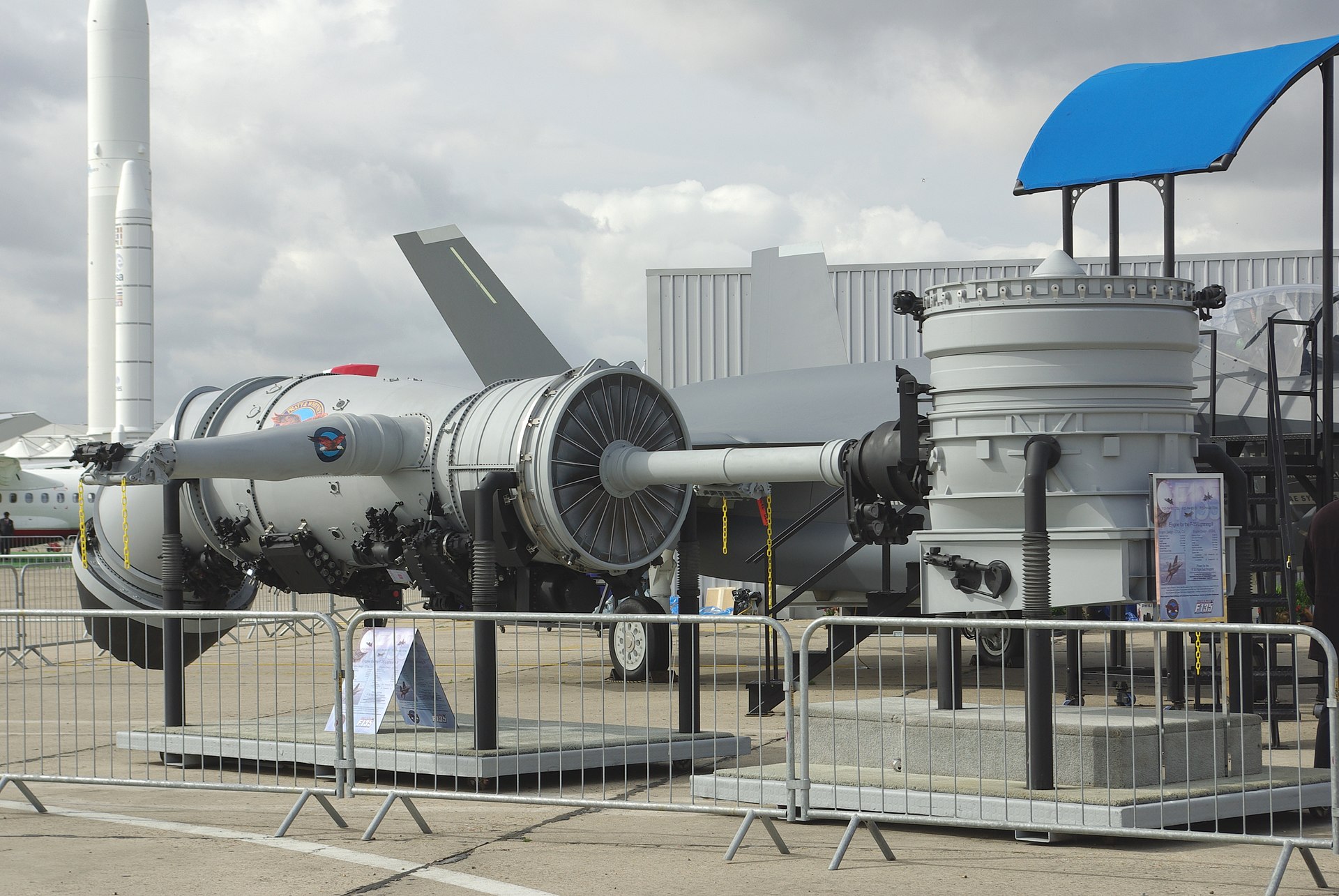
A hybrid-electric power source, combining electrical rotor propulsion with a conventional powerplant, is another possibility, but it’s still a long way off, Nissen reckons, and would come with plenty of extra complexity and technological risk. In Bell’s studies, current hybrid propulsion is suitable only for aircraft of “very, very low gross weights,” in the “several thousand pounds class.”
A hybrid engine also imposes an even greater weight penalty than a traditional shafted system. Anything over 300 horsepower, Nissen contends, will currently provide a power-to-weight ratio that’s “pretty miserable.” For the HSVTOL concepts, the engine power starting point is 1,000 horsepower, while today’s V-22 engine develops 6,000 horsepower and provides a power-to-weight ratio that is “extremely hard to beat.” With that in mind, a conventional turbine engine, adapted for convertible operations, is likely to be the powerplant of choice for the larger HSVTOL designs.

Clearly, all three of Bell’s HSVTOL concepts involve a degree of low observability (LO), or stealthy design features, although this is seen as just one facet of a design that’s tailored for survival in a contested environment. As well as flying low, the aircraft would be designed to be “more survivable from a signature standpoint,” with infrared and noise suppression features incorporated from the outset. Unlike a stealthy fighter, of course, an HSVTOL aircraft would be required to spend time at lower speeds over the ground, or at least in the hover, while in hostile environments, demanding full-spectrum survivability. Electronic and infrared countermeasures that are incorporated in a defensive suite would also be a key feature.
Nevertheless, “with your rotors stowed in cruise mode, you have a signature that is much less than any other rotorcraft ever produced, by a long shot,” Nissen says. “You’re not going to compete with aircraft that are designed to be very LO [low observable/stealth] but you’re going to be somewhere in between. You’re going to be capable of getting places that you wouldn’t necessarily get to.” Then, once entering the vulnerability period on approach into the terminal area, the HSVTOL aircraft would be expected to maneuver or counter potential threats, too. As Nissen observes, “LO-looking shapes are not enough — you need other tricks for total mission survivability.”
Combat search and rescue and beyond
The HSVTOL concepts, and the medium-size HSVTOL aircraft, in particular, would seem tailored for Air Force Special Operations Command’s personnel recovery mission set, currently provided by the CV-22B Osprey tiltrotor, for which the command is now already starting to look for a successor. Nissen says that there is potential beyond AFSOC, however, with Air Combat Command likely to require a future “a shooter and recovery aircraft” to fulfill its combat search and rescue requirements. In this way, it could be envisaged that the unmanned HSVTOL Light could serve as an armed escort for the manned medium-size HSVTOL platform, helping it to access more-contested areas.
Speed, range, and low-observable features would also allow Air Force combat search and rescue (CSAR) crews to access areas they either cannot right now or can’t without taking on extreme risk. This is an especially troubling issue we have raised many times before due to the expansion of stealthy aircraft across the Air Force’s combat fleet and the proliferation of more advanced air defense systems around the globe. If an F-35 or B-21 couldn’t survive in a hostile area, how is an HH-60 going to? Considering the ranges likely involved with future air combat operations, these traditional rotary-wing assets won’t even be able to reach the areas where combat missions are being flown by stealthy aircraft in the first place. Also, speed alone is incredibly valuable with CSAR. So, HSVTOL could become not just a tactical luxury, but a necessity.
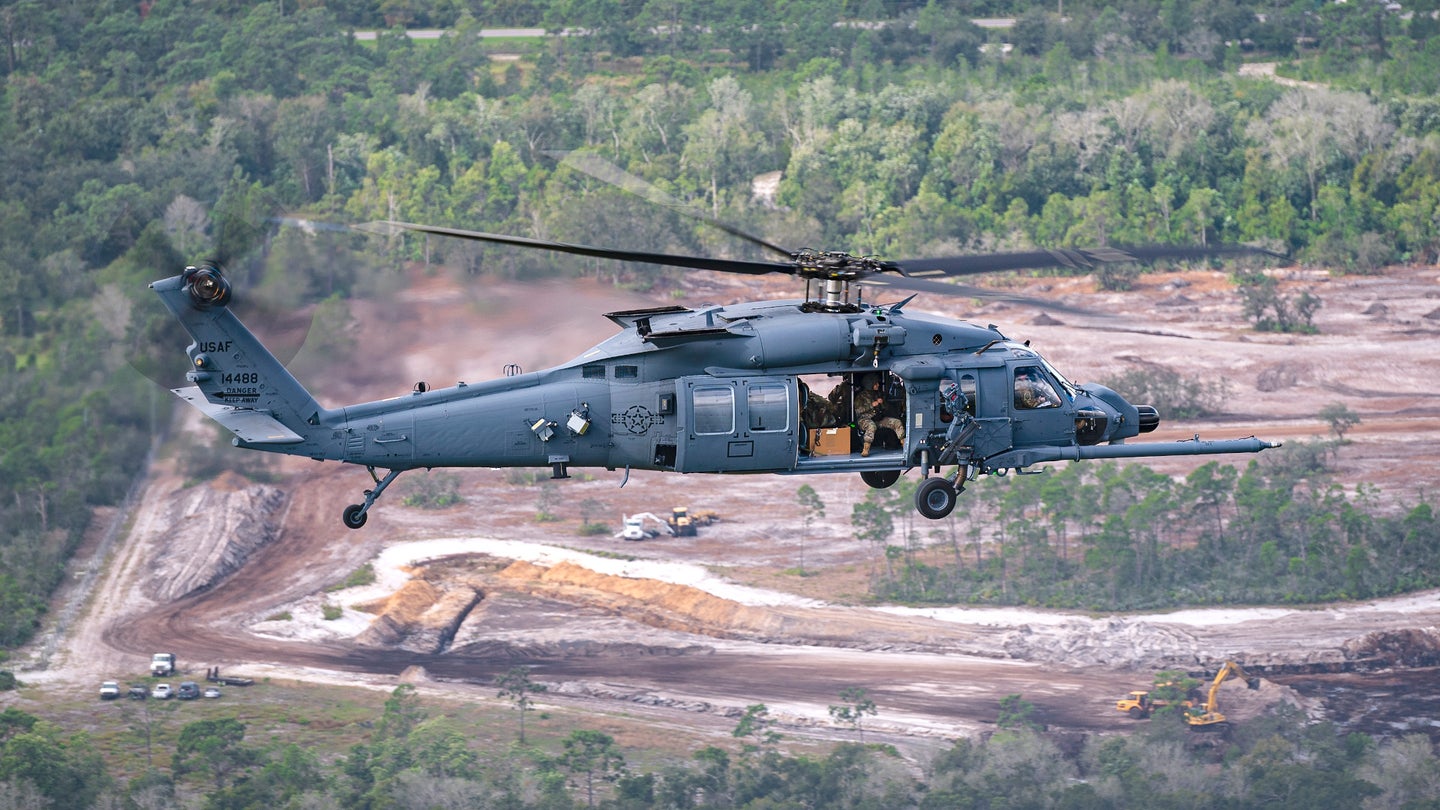
It is also worth mentioning that with every minute that goes by before a heliborne rescue of a down pilot occurs means there is less of a chance of a successful outcome. Speed is literally of the essence when it comes to CSAR. While a V-22 offers a big leap in capability in this regard, HSVTOL offers a drastic leap beyond that.
Then there are emerging requirements for high-speed tactical mobility, as well as ISR and strike, across the services. The reason for the three HSVTOL concepts, Nissen says, is in response to “a lot of interest in tactical mobility.” Notably, the largest HSVTOL concept in Bell’s artwork wears a US Air Force tail flash of the kind typically used on the service’s cargo aircraft, as well as aerial refueling tankers.
Not only is HSVTOL Light the lowest barrier for entry in this class, meaning it will take the least time and financial effort to develop, but it’s also of a size that has potential relevance to a number of current unmanned initiatives. These include the Marine Corps’ MUX requirement, calling for a drone that will be able to take off from and land vertically on the deck of an amphibious assault ship, as well as the Air Force’s Low Cost Attritable Aircraft Technology program, or LCAAT. Then there’s the same service’s Skyborg program, which is all about inserting an artificial intelligence-driven ‘computer brain’ into drones. HSVTOL Light could feasibly provide a unique platform for these unmanned endeavors and more.

As for the larger HSVTOL concept, the roughly Hercules-sized design, this could offer the U.S. military the type of high-speed, vertical-lift stealthy transport that it has long sought, in particular for the special operations role. The sage behind the desire for a low-observable transport of the kind that could, for example, evade enemy air defenses before placing a small team of operators deep within enemy-held or contested territory is one that The War Zone has examined deeply in the past, here and here. Even offering runway independence to “big Air Force” for some of its tactical airlift needs could be quite enticing considering the realities of expeditionary operations in the Pacific or really anywhere that enemies have the ability to neuter airfields over long distances.
Regardless, the next major step is to build and test a technology demonstrator based around a smaller-scale airframe, the timeline for which is dependent on who might come forward to back Bell’s concept. “We’ll take anybody and everybody,” Nissen says, although the Air Force, NASA, or DARPA would be likely candidates.
“As soon as you get that thing to flight, then it’s more about the services’ acquisition timeline,” Nissen says. At that point, we might start to see broader interest in HSVTOL designs for both the established personnel recovery mission, but potentially for many other applications too. That, of course, would be a ways off, but the feeling at Bell is that they are now close to finally cracking the challenge of a truly feasible HSVTOL aircraft, and the company could be well-positioned to write the next chapter of an endeavor that began back in the late 1960s.
Contact the author: thomas@thedrive.com
